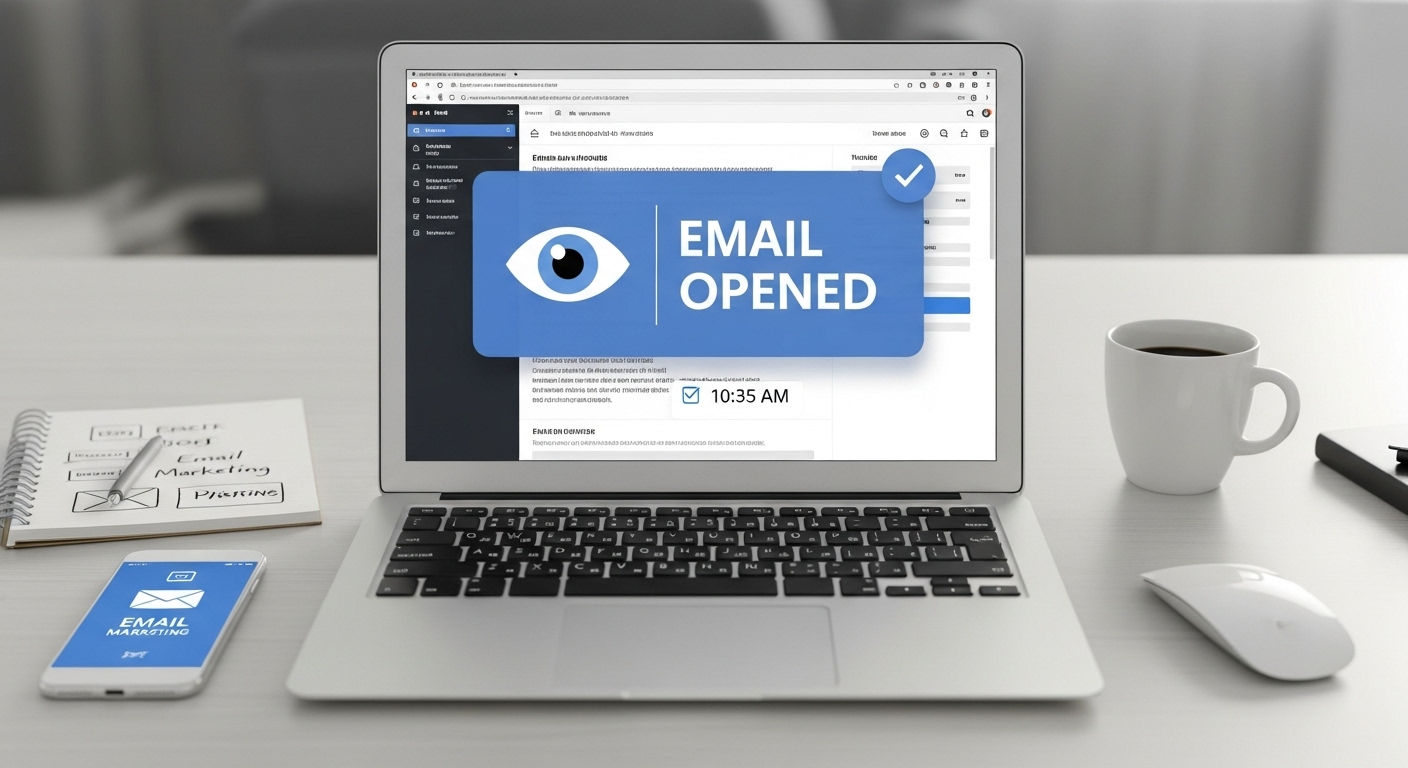In today’s fast moving digital era, email is a must— whether you are a marketer, a freelancer, a business owner or even a casual user. But what comes next, after you press “send”? Whether the receiver opened your email or not. If you’re looking to track who has read your email, then knowing how to check if an email has been read is an important tool.
In this post, we’ll dive into all you need to know about email open tracking, the tools at your disposal, how it works, and the ethics — all with the help of semantic SEO for ultimate visibility on the search engines.
Understanding Email Tracking: What It Really Means
Before we go into the tools or methodology, let’s get a basic grasp on what email tracking is. When you send an email, there is generally no native function in most platforms that lets you find out if that message was opened. That’s where email tracking software and apps and browser extensions can be incredibly useful.
Most services just to include invisible image (irremovable pixel) inside an email. It pings whoever sent the email when the recipients open the email and download the image.
Some advanced tools even provide:
- Open timestamps
- Device and location info
- Number of opens
- Link click tracking
But not all opens are 100% precise, particularly if the recipient disables images or reads email in privacy-centric clients.
Best Tools to Check If an Email Has Been Read
1. Mailtrack (for Gmail users)
Most popular email open trackers 1. Mailtrack – the email tracker for chrome (Gmail) One of the best know email open trackers, it’s also the easiest to use – it’s a Chrome extension that works with your Gmail with no hassle. It offers:
- Real-time notifications
- Unlimited tracking for free
- Double-check marks to indicate email opens
2. HubSpot Email Tracking
For something more than just read receipts, HubSpot’s email tools can bring in CRM features that reveal when and how many times your emails are opened. Great for sales or marketing!
3. Yesware
A sales-oriented platform that not only tracks email opens but also allows for scheduling, templates, and performance analytics.
4. Boomerang
Beyond the email scheduling, Boomerang also offers read receipts and even AI-driven response prediction.
5. Mailchimp (for newsletters)
Mailchimp offers in-depth statistics on open rates, clicks, and audience interactions for bulk emails, handy for email marketing campaigns.
How Email Open Tracking Works Behind the Scenes
Here’s generally how it works when you use an email tracker:
- A tracking pixel (a 1×1 transparent image) is embedded in your outbound email.
- When the recipient opens the email and images are turned on, the pixel is then loaded from the sender’s server.
- This pings the tracker (known as a “ping”) to indicate that the email was opened.
- An alert gets pushed to you in realtime or from your email dashboard.
Some solutions take this a step further, tracking clicks and engagement using unique links in URLs.
Is It Ethical to Track Email Opens?
It’s generally fair game to track email opens in a professional context — particularly in sales, customer support, and marketing. However, transparency is important.
Some best practices include:
- Saying that your email is being tracked ( particularly as part of outreach or in a communication with a client).
- Do not use trackers for personal/sensitive chats.
- Follow privacy settings and legal guidelines at all times (including GDPR).
Pros and Cons of Email Open Tracking
Pros:
- Know when to follow up
- Improve response rates
- Understand recipient engagement
- Try out subject lines, and even campaign strategy
Cons:
- Not really accurate (blocked images, privacy tools)
- Can be considered as unethical or illegal
- Can be seen as invasive if used incorrectly
Alternative Ways to Know If Your Email Was Opened
If you don’t want to rely on tracking pixels, try these indirect approaches:
- Request a read receipt: Most Email clients have this feature, but the recipient can refuse.
- Include call-to-action links: By tracking click-through data, measure interest.
- Use conversational follow-ups: Inquire if they had an opportunity to look at your last email.
- Use email marketing platforms: Many of them offer analytics even if you use third-party trackers.
Email Engagement Insights for Tech and Marketing Professionals
Tracking email opens is about more than just curiosity for developers, marketers, and digital nomads. It informs:
- Campaign optimization
- Customer journey mapping
- CRM integrations
- Lead scoring and sales funnel analysis
You can also create mail automation flows according to its open status to enhance productivity.
Conclusion
The ability to know if an email has been opened is not just a neat trick it’s also a useful communications tool in the professional and tech-centric worlds that dominate today. From perfecting outreach tactics to knowing exactly when to follow up, email open tracking can help optimize productivity and results. Although it isn’t always 100% accurate because of privacy constraints, the information collected is still worth exploring.
And don’t forget to mix capacity and ethics, and never abuse tracking.
FAQs
Q1: Can I check if an email has been read without using a tracker?
Yes, but it’s less reliable. You can ask for a read receipt or Check the recipient Response Manually.
Q2: Is email tracking legal?
In many cases, the answer is yes — just make sure to always follow local privacy laws like GDPR and consider telling recipients when you’re sending trackers.
Q3: Why do some tools show an email was read multiple times?
This is frequently occurring when the email is reopened or synced across devices.
Q4: Do tracking pixels work if the recipient disables image loading?
No. If an image block is in place, the tracking pixel will not load and the open will not be tracked.
Q5: Which is the most beginner-friendly email tracker?
Mailtrack is mostly user-friendly, especially for those who know Gmail.



